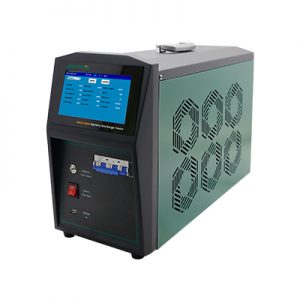How a battery discharge tester works ?
A battery discharge tester is a device that measures the capacity of a battery and studies its discharge curve. The discharge testing process involves draining a battery at a constant current until it reaches its fully discharged state. During this process, the voltage and current of the battery are measured at regular intervals, and these measurements are used to calculate the battery’s capacity and discharge curve.
Battery discharge testers are an essential tool for manufacturers and researchers who work with lead-acid and lithium-ion batteries. It’s used in such industries as telecom T&E utility, emergency lighting , energy , reserve power and industrial.
In this article, we will explain how a battery discharge tester works, and what factors affect its performance.
Overview of Battery Discharge Testing
The process of battery discharge testing involves draining a battery at a constant current until it reaches its fully discharged state. During this process, the voltage and current of the battery are measured at regular intervals, and these measurements are used to calculate the battery’s capacity and discharge curve. A typical battery discharge tester consists of a load bank, a power supply, a voltmeter, and an ammeter. The load bank is connected to the battery under test, and the power supply provides a constant current to the load bank. The voltmeter and ammeter are used to measure the voltage and current of the battery during the discharge test.

Factors Affecting Battery Discharge Testing
There are several factors that can affect the accuracy and reliability of a battery discharge tester. These include the load bank resistance, the power supply stability, and the accuracy of the voltage and current measurements.
Load bank resistance is an important factor because it determines the discharge current that is applied to the battery. A lower resistance will result in a higher discharge current, which can cause the battery to heat up and reduce its capacity. A higher resistance will result in a lower discharge current, which can extend the test time and increase the measurement error.
Power supply stability is also an important factor because it determines the accuracy of the discharge current. If the power supply voltage fluctuates during the test, the discharge current will also fluctuate, which can cause measurement errors. To ensure accurate measurements, it is important to use a power supply that provides a stable voltage and current output.
The accuracy of the voltage and current measurements is also critical for reliable battery discharge testing. The voltmeter and ammeter must be calibrated to ensure accurate readings, and they must also be able to measure the battery voltage and current accurately during the discharge test. In addition, the measurement interval must be appropriate for the battery being tested. For example, a high-capacity battery may require longer measurement intervals to accurately capture its discharge curve.
Types of Battery Discharge Testers
There are several types of battery discharge testers available, each with its own advantages and disadvantages. The most common types are constant current (CC) testers, constant power (CP) testers, and variable power (VP) testers.
Constant current testers are the simplest and most commonly used type of battery discharge tester. They provide a constant current load to the battery during the test, and the voltage and current measurements are used to calculate the battery’s capacity and discharge curve. However, constant current testers may not be suitable for testing high-capacity batteries, as they may require long test times and large load banks.
Constant power testers are similar to constant current testers, but they provide a constant power load to the battery. This means that the load bank resistance is adjusted during the test to maintain a constant power output. Constant power testers are more suitable for testing high-capacity batteries, as they can maintain a constant power output over a wider range of discharge voltages.
Variable power testers are the most advanced type of battery discharge tester, as they allow the user to vary the load during the test. This means that the load bank resistance can be adjusted to simulate different discharge conditions, such as high-current or low-current discharges. Variable power testers are ideal for researchers who need to study the behavior of batteries under different discharge conditions.
Each type has its own advantages and disadvantages, and the choice of tester depends on the requirements of the user.





